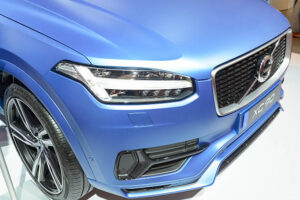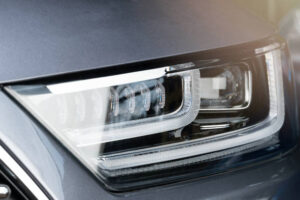An Insight into the Main Features of 9005 LED Headlights
Let us be honest, technology has reached the peak and car lovers all over the world have boarded the bandwagon of brightness. Better performance, safety and style, drivers want everything but only improvement in the aspects mentioned. And once you question why 9005 led headlights seem to be the most popular night driving upgrade, you are in the right place. We will also look into the hubbub of the secret sauce cooling systems and the dissection of watt ability and brightness as a couple that brings out the intensity that every person desires in its scorching beams.

The Problem with 9005 LEDs Getting Hot
The reason that 9005 LEDs get hot is a common problem with all LEDs: LEDs require a current to conduct themselves, and in order to conduct the current the LEDs must have a temperature. Much like a semiconductor, LEDs can get too hot to touch; when the temperature gets hotter it will cause the LED to fail.
High luminosity, minimized, efficient. That is the marketing line you will read most of the 9005 LED bulbs. And underneath that marketing, they burn up a lot more heat than you would imagine. Unlike halogens, LED chips pack an electrical amount of power unimaginable into a little chip. Now the surprise, LEDs produce a lot of heat at the base and not on the surface. When uncontrolled, that heat will be the death of the electronics, reduce life span, and dull brightness.
Suppose that you rev up a racecar that does not have any radiator in the hood. And before you know it, you will be experiencing those warning lights, followed by disaster. The unsung hero, however, has got to be efficient cooling gadgets, as heat is the silent killer in your shiny LEDs.
The Role of the Cooling Systems: Just Not a Supplement
As such, what are cooling systems? Heat sinks, built in fans, copper boards are ordinary solutions and, occasionally, there is also liquid cooling, at least, in a world of 9005 LEDs. What it comes down to are the nuts and bolts.
Heat sinks: Aluminum fins, possibly with a fan fixed, are placed directly at the bottom of the LED. Their task is straightforward they have to remove heat off the electronics as quickly as they can. The improved heat sink leads to happier longer-living bulbs.
Active cooling involves the use of small yet fast moving fans. They are moving an unexpected amount of air, and then off to this they whisk away the heat before it cooks the circuitry.
Conductive Materials: There are the bulbs that have copper or more advanced forms of ceramics to conduct the heat between points A and B.
All this sounds very high-tech, but in actuality imagine it as giving your bulbs some sweat glands. Any chance, without them your LED would soon get overheated, fade and extremely premature. Should you have smart cooling, then you are free to turn up the wattage, thereby increasing your brightness without fear of seeing your bulbs take a chance of going to sleep on you.
Wattage Vs. Brightness: How Not-so-Straightforward the Relationship Is
At last we can clear up one enormous source of misunderstanding. The wattage will not automatically equate to brightness. You are likely to be familiar with that classic formula of higher wattage = brighter light. It is not that easy with 9005 LED bulbs.

Behind-the-scenes is as follows. Wattage does not necessarily define the amount of light produced. On one hand, you may have an LED with a high-wattage and low output in terms of the amount of light on the road, or a low-wattage LED which throws out some serious lumens due to more intelligent design.
Fun Fact: A well designed 25W LED can deliver as much light as a very some thought out 40W bulb does. The issue here is lumens per watt, that is, just how much light will you expect to receive relative to the amount of electricity you are paying to be received.
By outcome we have to bring on the numbers: A good quality 9005 LED will produce between 3,000 to 6,000 lumens.
Bulbs with low prices can only produce 2,000 lumens even after its wattage is stated to be high.
Keeping Your Cool: Why LEDs are killed by Overheating
What are the effects of bad thermal management? Not pretty. And that is the horror story:
Rapid Dimming: The heat makes the lights die out quickly. There is a sudden loss of the night vision.
Electronics Failure: The microchips contained within the bulb just cannot take an extended period of thermal abuse.
Low Life Expectancy: Where rather than 30,000+ hours your bulbs splutter out within a year.
It would not take long to drown like wearing a winter coat in the beach and you will require assistance. To perform to the best they can, it is always advisable to go with 9005 LEDs in consideration of heat dissipation. Using passive heat sinks combined with active cooling is a one-two combination you will use season after season to keep your bulbs running cool.
Pro-Tips on Selecting the Best 9005 LED Bulbs
Swing into action our newly acquired wisdom. What makes a good LED and what makes a nonsense LED that provides headaches?
Cooling Inspection: Search beefy aluminum heat sinks as well as molded fans. And the plastic hay character with the small plastic fins, forget it.
Look up Real World Lumen Data: In the real world, look up is not a synonym of check. Most of the dodgy brands exaggerate their figures.
Measure Your Demands: When you drive on wavy, dark roads, a more intense, more wattage bulb with excellent cooling is a name of game. To the city sleekers, mediocre performance and steady cooling could suffice.

Ease of Use: Make sure you have checked compatibility to ensure that your bulb will fit your housing and not crowd other electronics.
LED Tech Today- No Longer Gimmick, It is All About Safety
It is not just a brag bulb that people buy 9005 LED. The most important is to drive better. The appropriate bulbs allow you to see animals, signs, and drive more quickly. Naturally, you are not going to blind other people on the road, and so you should choose LEDs that have appropriate beam patterns. All of this is supported by smart cooling, mile after mile.